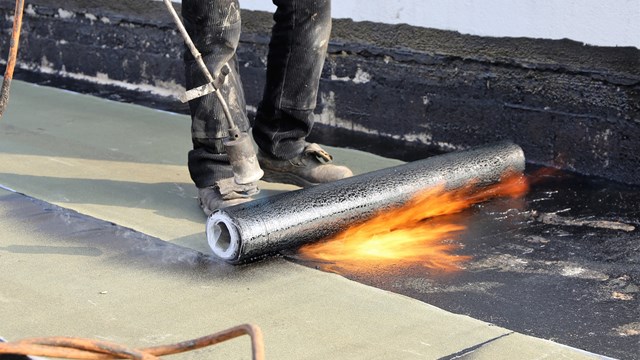
Change is a part of life; and that’s especially true if you’re talking about living in a New York condo or co-op, where no building ever stays the same for too long. Renovations are done, capital improvements are required and even upgrades for building common areas are eventually taken care of.
Regardless of if it’s a unit owner looking to do some remodeling or a building-wide capital improvement program that will affect all residents, odds are that an architect and/or engineer will be part of the process. While architects and engineers perform many parallel functions, the two disciplines are not the same and often they are forced to work together.
Understanding Distinctions
“Many of our clients use the terms architect and engineer interchangeably, but in my opinion, architects have a broader training across all the spectrums of a building’s design, where an engineer is schooled in a specific discipline, like a structural engineer, mechanical or industrial,” says William Pyznar, principal with the Falcon Group, an engineering, architectural and consulting firm in New Jersey. “I think the architects are trained more on life-safety issues and general background.”
According to the New School of Architecture and Design, architects are responsible for designing the aesthetics and spatial details of a building’s project, and seeing to it that the overall end-use objectives of the client are met. Once the architect and client are in agreement, the architect then provides the engineer with detailed architectural designs. It is under this framework that the engineer will design the building’s systems themselves.
Regardless of discipline, both types of professionals will interact mostly with the board and management, sometimes with just the individual resident, sometimes with a board-appointed design committee, and sometimes with all of the above. However, often they must work together to successfully execute the projects they’re hired for.
Getting Started
Marciano Stanco, principal with Magnum Opus Architecture, PC in Bayside, says it is very much in a client’s best intentions to involve an architect at the very conception of a remodel or capital improvement project.
“The architect will request a ‘kick off meeting’ to set the parameters of the project and to assist the client through the process of a remodel or capital improvement project,” he says. “The agenda for the meeting should include assessing the client’s needs and expectations, confirm their budget and establish the schedule for the project.”
In most instances, an architect will need to prepare feasibility studies and preliminary budgets to establish and confirm some of these critical agenda items. Once these items are established, then outside consultants such as engineers, specialists or contractors can be invited in to join the project team to offer their expertise as required.
Pyznar says he works with both the management companies and the boards on projects. “Some may have had some studies done and know what they need, others we’ll get involved with capital planning and look ahead a few years,” he says. “Typically, we’ll start with a meeting with the property manager and board.”
During that meeting, an architect will define the scope of the work and present all viable options—be it a unit renovation or a capital project.
Working the Small Jobs...
When an architect is hired by an individual owner the architect will interact with building’s administrators, board members and/or management as an integral project team member that advises, guides and coordinates all team members through the project.
“On some occasions, a building owner may specifically request that the architect only interact directly with certain team members due to sensitive project conditions that may exist,” Stanco says. “Generally however, communication amongst all critical team members is vital because the failure of team cohesiveness can undermine the success of a project.”
Howard Zimmerman, founder of Howard Zimmerman Architects in Manhattan, notes the responsibilities for an architect during an apartment renovation is very different than for a capital improvement.
“It’s a private person and you are hired and involved with them from day one,” he says. “A client will hire us to remodel their kitchen or bathroom, or whatever it is, and our first request to them is to get a copy of the alteration agreement or house rules. We need to know if they allow wet-over-dry, do they allow washer/dryers, central air, and all those type of things.”
It’s up to the client to find this out, and once the resident has all the needed clearances from the board, there’s no need for the architect to meet with anyone else in the building. “We try to get as much information up front as we can, so we can include it in our contract documents,” Zimmerman says. “We also have engineers in-house, so we are one-stop shopping, which eliminates some of the butting heads that comes when architects and engineers get together. We have instantaneous access to information.”
Zimmerman says the company is set up this way because he was tired of the arguments and the scheduling problems and all the challenges that came with working with outside engineers.
…and the Bigger Jobs
For large-scale projects, such as capital improvement projects, their responsibilities become much greater.
As an example, Stanco's firm assists the building owner or building manager in communicating details and goals to the residents of a building through several different means. “We meet regularly with the building’s board, we attend quarterly or year-end meetings where all residents of the building are invited, we display ‘easy to read’ graphics in the building’s lobby that depict the current status and schedule of a project and we provide weekly field reports outlining up to date information about the project that can be distributed as per management’s wishes,” Stanco says.
The Job Begins
Once construction begins, an architect can custom tailor their oversight of the project to the client’s specific needs.
“Typically we will establish weekly meetings with the project team members,” says Stanco. “During that time we will also perform inspections of the work being conducted to ensure that the construction being performed is in compliance with the construction documents and rules and regulations of the building.”
It is also required that an architect visit the site at specific intervals of the construction process to perform inspections.
“For example, we require that all waterproofing/flashing be inspected prior to the contractor installing brick,” Stanco continues. “Once the brick is installed, there is no way to confirm that the waterproofing was installed correctly. We make ourselves available at a moment’s notice so that the contractor’s work schedule is not impacted, the work can be inspected, approved and construction can continue to the next phase.”
Pyznar says the level of the complexity of the project determines how often an architect is on site. A flat roof job would see an architect come by a couple of days a week, but a large façade job with window replacement might have a full-time engineer and architect on site every day.
For individual unit renovations, Zimmerman says the problems mostly arise during construction, so “You can have the best set of drawings, but in the hands of a bad contractor, you’ll get a bad job,” he says. “We are very construction-oriented. My people like to be there 3-4 times a week to make sure things are better than ok. And we like to photograph everything so if issues arise six months later, we have records of everything and can answer questions about what went on beyond the walls.”
A Collaborative Working Arrangement
Architects and engineers must work together and do so peacefully, and that’s not normally a problem according to most. In fact, more and more firms have both architects and engineers on staff so it’s easy to have things go through the work pipeline in a clear and concise manner. Being under one roof isn’t always the case, though.
“If there’s another engineer involved in the building, where they are doing a certain part of the work, we’re all there to serve the client so we will work professionally with anybody,” Pyznar says. “If we’re asked to implement a design that the engineer came up with, we need to look it over and state whether we agree with it because we’re taking some level of responsibility, so that can slow the process.”
Working With Design Committees
Architects and engineers must also work with design committees on occasion in a collaborative environment that works best for all.
“The design committee provides the architect with their ‘wish list,’ program and needs for a project,” Stanco says. “Once those parameters are set, an architect can begin to design or plan a project. A typical design process will involve preliminary designs and options being presented to the client.”
Based on the client’s comments, those preliminary design options will be refined into a more developed design concept, which is presented to the client for approval. Then another round of refinements can occur to come up with the final design that the client is happy with prior to starting the detailed construction documents.
Working with a design committee isn’t done on every project, Pyznar notes, but when it is, he has to sit down with them and talk over the scope of the project.
“I’ll get their initial input and usually they have gone through the process of generally knowing what they want, what the project will include and aesthetically what they hope for,” he says. “This could create some extra meetings along the way as we’re developing things, because they want to get a little more involved.”
Zimmerman only works with design committees on large building projects like a lobby renovation or hallway improvement, and says that sometimes, the collaborative process isn't always smooth sailing. “You could be working with five people and they have eight opinions between them,” he says. “We’ve done it enough and are skilled enough that our job becomes less than a design job and more of a consensus builder.” The secret for success, he says, is being part diplomat, part housemother and part psychologist.
The Final Word
Architects and engineers are professional workers who should be able to work together and deal properly with the board, management, design committee, and each other. Even if they have a difference of opinion, they must find a way to work together to successfully execute the projects they’re hired for.
Friction often translates into the end product, so it’s vital that harmony rings true.
When things flow, good things happen. When the design and construction run smoothly, both architect and engineer can stand by the finished product and proudly say, “We built this together.”
Keith Loria is a freelance writer and a frequent contributor to The Cooperator.









Leave a Comment